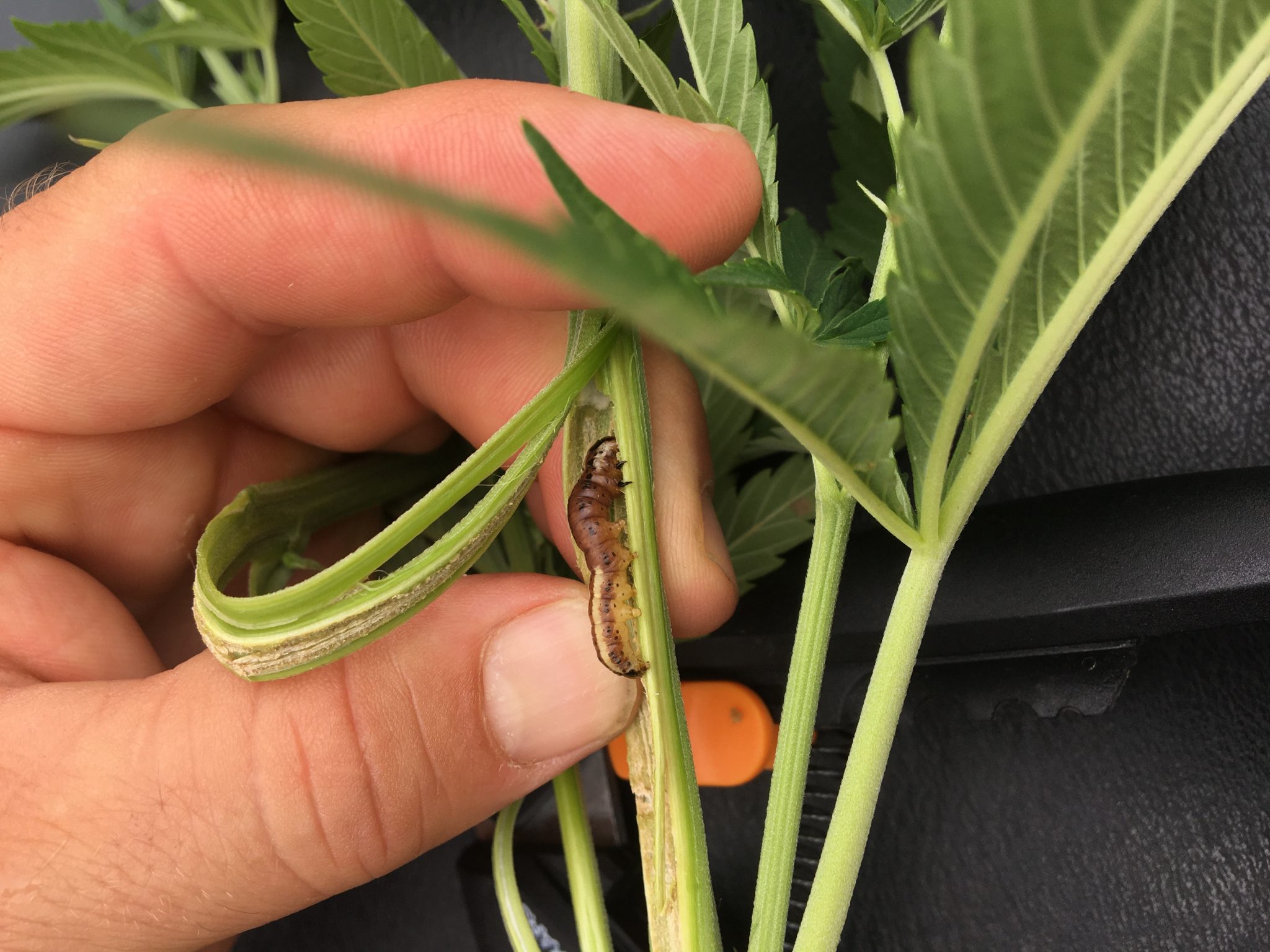For many hemp growers, things have been calm in the field. We have seen low disease incidence and most growers are in the swing of in season crop management—mostly scouting for males and monitoring plant health. However, there have been some panicked calls about stalk boring pests.
The two main culprits right now are the common stalk borer and the Eurasian hemp borer, but we also see European corn borer in hemp. Managing stalk boring pests is challenging, once they are inside the plant, they are well protected. One of growers that saw a surge in the common stalk borer noticed entry holes and bulging several days after mowing large weeds around the field. This borer can move quickly from mowed or sprayed weeds and tunnel into a new host, in this case, CBD hemp.
What is a grower to do? Well at this point in the season, not much. Common stalk borer was likely in the field the previous year. It would be wise to avoid planting susceptible crops in fields that have a history of common stalk borer. Managing weeds within and around the field before planting hemp is advisable since larvae often start in small weeds and move to larger plants as the larvae mature. Fortunately, there is only one generation per year. Adult moths lay eggs in late summer and fall. Managing weeds when there is not a crop in the field can disrupt the lifecycle. Some states recommend spraying or mowing weeds in the early summer and apply an insecticide between the weeds and the crop. Unfortunately, I couldn’t find much on efficacy of different insecticides for this pest and we have short list of products available for use in hemp fields (most need to be consumed by the pest to be effective). Good sanitary practices are advised for the Eurasian hemp borer, which means not holding over stems and stalks from infested fields. Overall, the incidence of stalk borer damage has been low so far. Growers need to keep an eye out for these types of pests so we can better understand how widespread and severe damage could be in the field.




